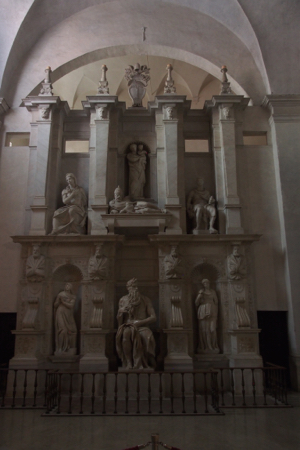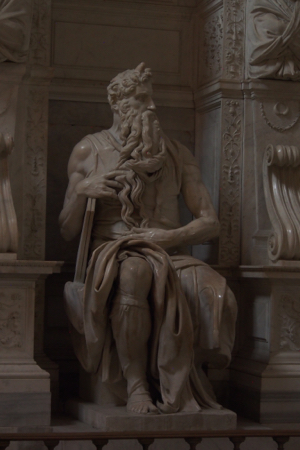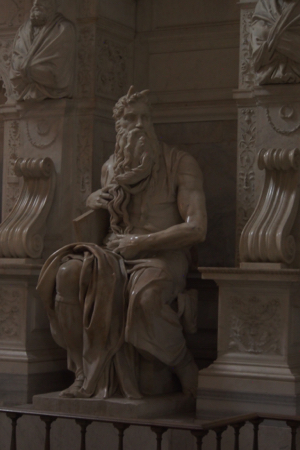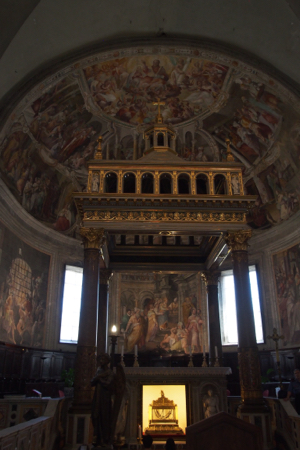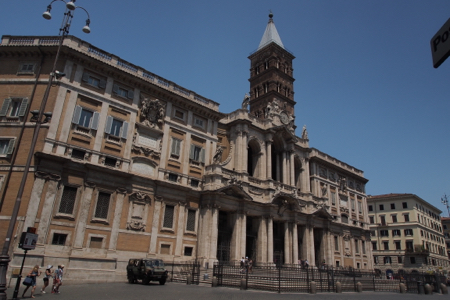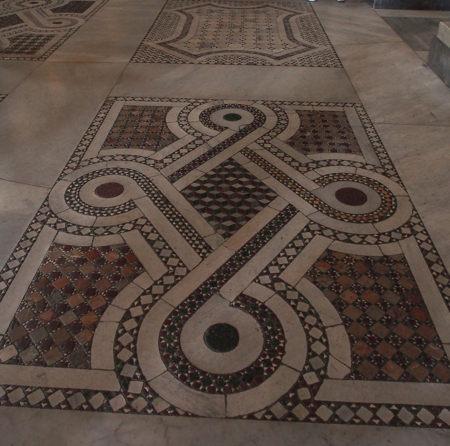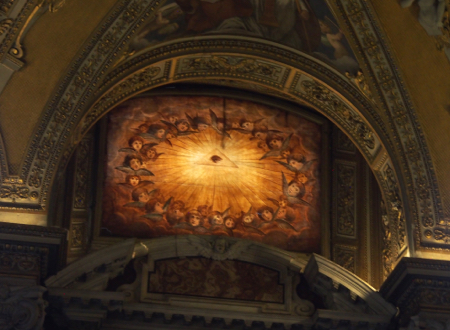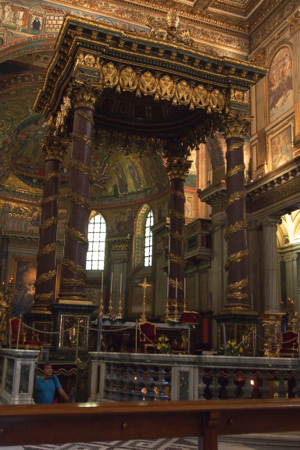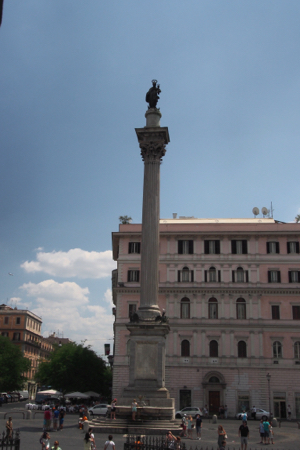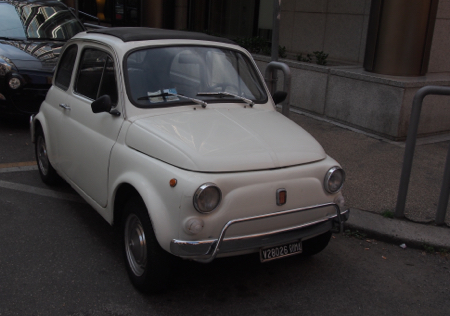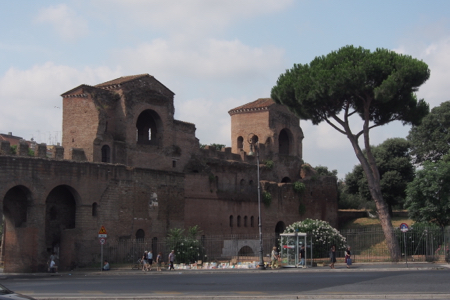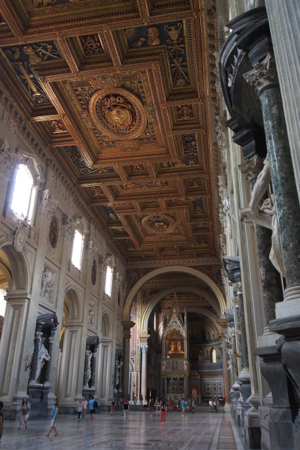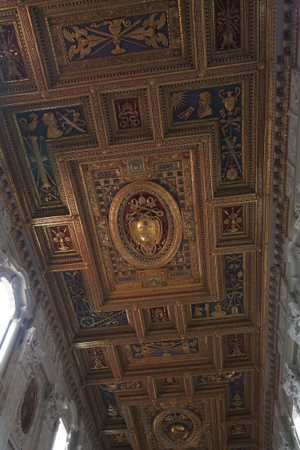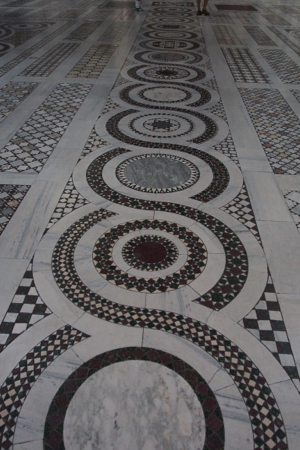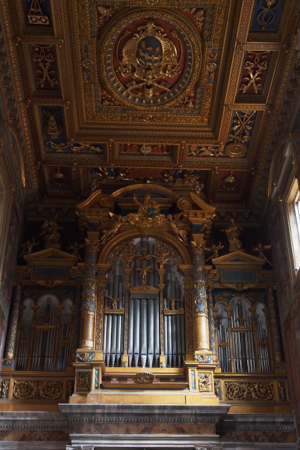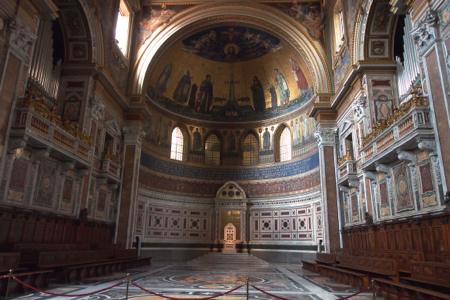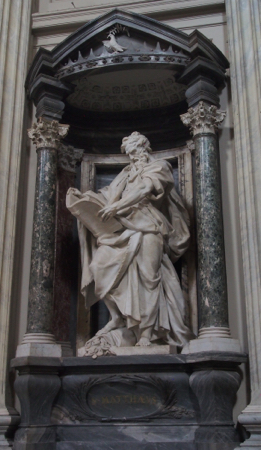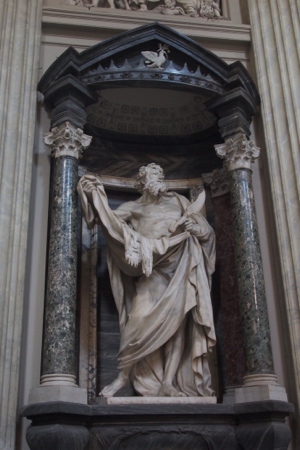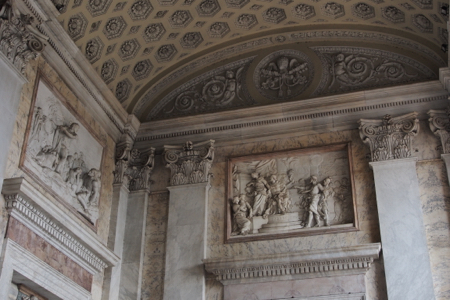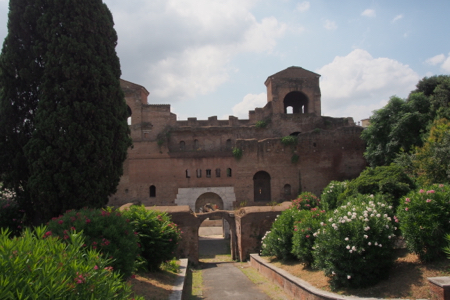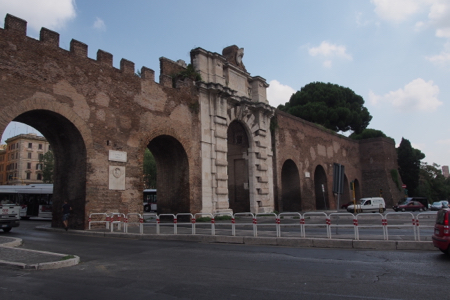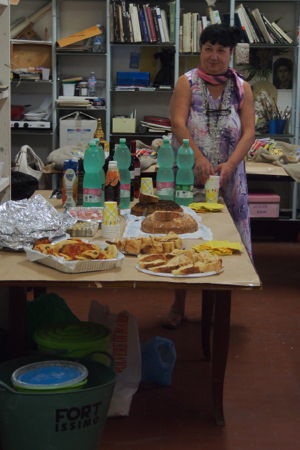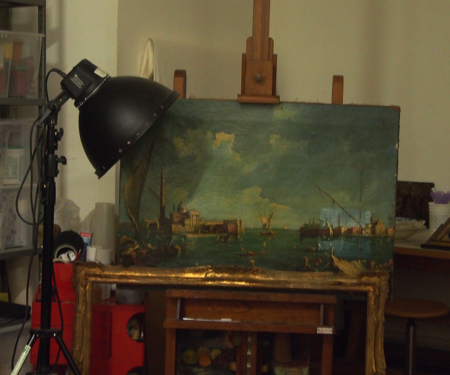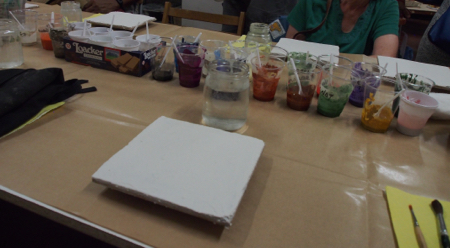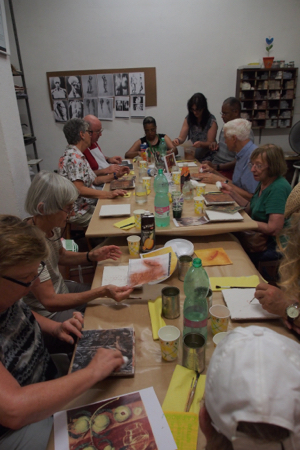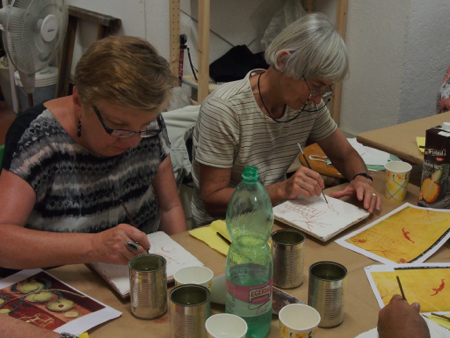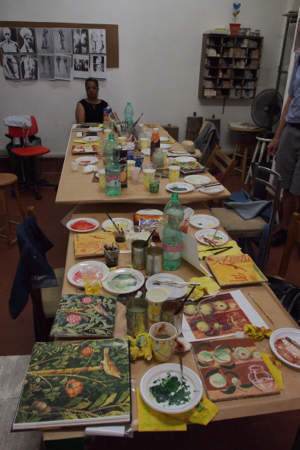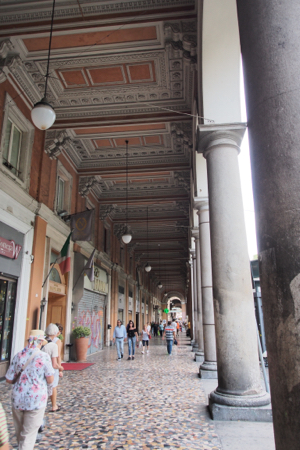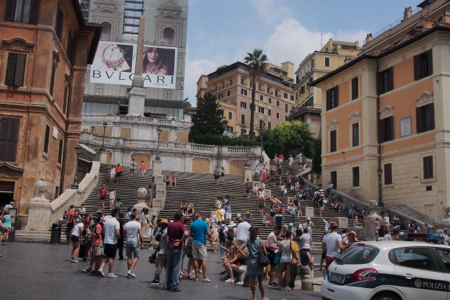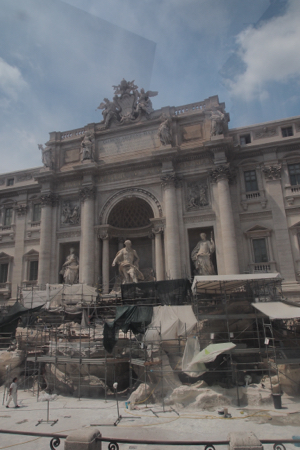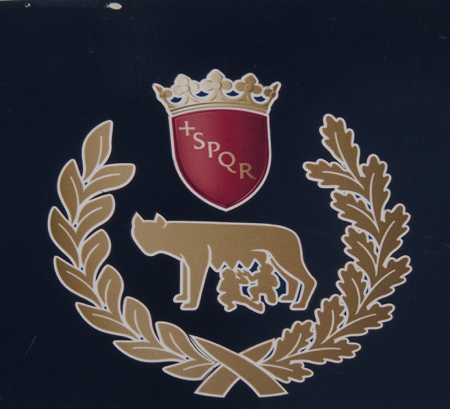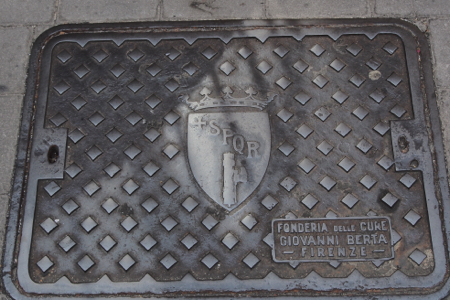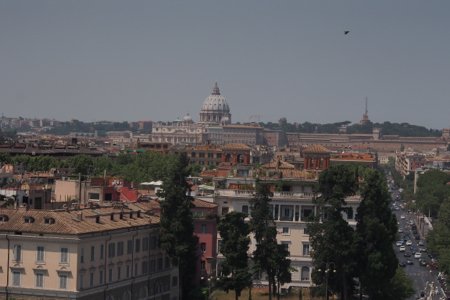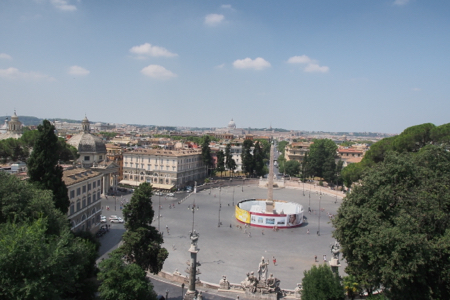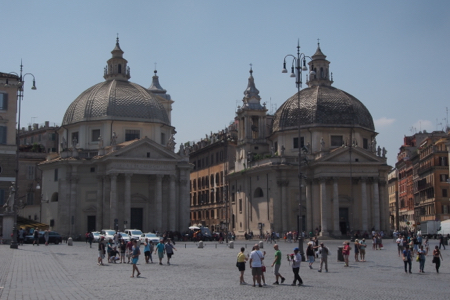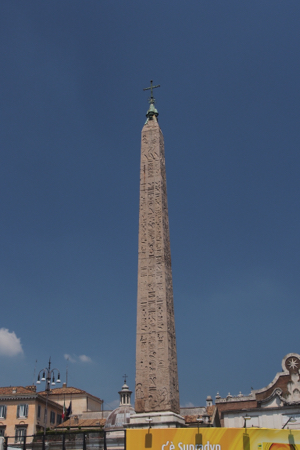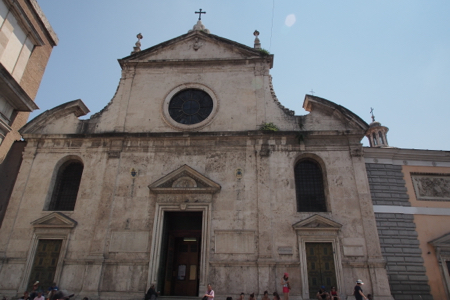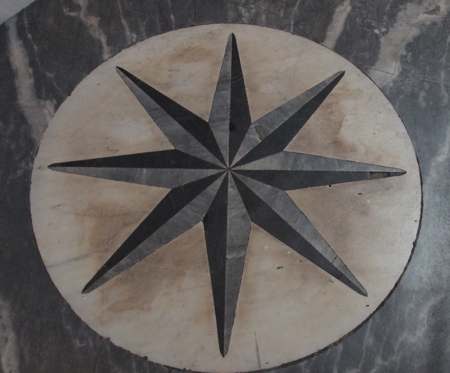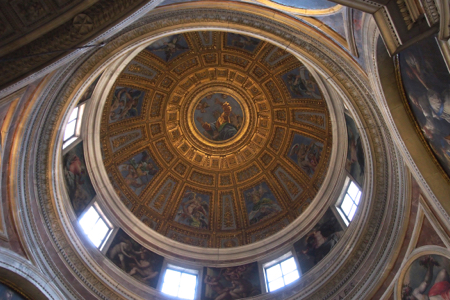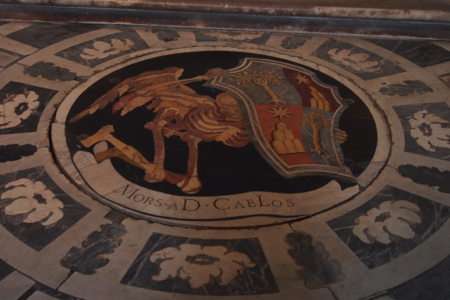Instead of getting on our bus to return to the hotel after touring the Coliseum and Forum, we hustled to the other side of the Coliseum and up to the Church of St. Pietro in Vincoli (St. Peter in Chains) to see Michelangelo’s Moses. We got there before Sunday mass, when visitors had to leave, and we saw the magnificent sculpture.
Michelangelo's Moses in the Church of St. Pietro in Vincoli
Michelangelo's Moses in the Church of St. Pietro in Vincoli
Michelangelo's Moses in the Church of St. Pietro in Vincoli
Church of St. Pietro in Vincoli
Church of St. Pietro in Vincoli
Next we found our way to Santa Maria Maggiore. It is a small scale St. Peter’s! It has purple marble columns supporting an elaborate canopy over the high altar. The church has four very elaborate side chapels.
We walked the rest of the way home, again stopping for a triple scoop ice cream cone at La Roma, which was on our way.
Santa Maria Maggiore
Santa Maria Maggiore - floor
Santa Maria Maggiore
Santa Maria Maggiore
Santa Maria Maggiore
Santa Maria Maggiore
Santa Maria Maggiore
In front of Santa Maria Maggiore
Mon., 7/13/15 – Rome
Today Giorgia was to take us on a tour of Rome to see the Spanish Steps and Trevi Fountain by public transport and then to learn about art restoration. However, the bus #36 route was changed overnight and was not stopping where we would pick it up. The transit workers were having a “white strike” meaning everything ran at a slow rate like an hour off schedule. The subways were packed with people who couldn’t find local bus stops and there were demonstrations at the Spanish Steps. So Plan B meant we got on a #19 trolley and got off at St. John in Lateran Church and went inside another magnificent church. This is the Cathedral for the bishop of Rome (Cathedral of Rome) who is also the Pope. The amazing architecture of the cathedral was designed by Constantine himself in the 4th c. There are huge statues of saints, Borromeo sculptures, a gold design ceiling, and many colors of marble all over. It is another OMG church. Outside is another statue of St. Francis.
Giorgia told us that a basilica has to be a church with the relic or remains of some saint. Across from St. John’s is a basilica which houses some of the marble “holy Steps” brought back by Constantine’s mother, Helene. How did she do that!?
Just another creatively parked cute small car
Aurelian Wall
Arch Basilica of St. John Lateran
Arch Basilica of St. John Lateran
Arch Basilica of St. John Lateran
Arch Basilica of St. John Lateran
Arch Basilica of St. John Lateran
Arch Basilica of St. John Lateran
Arch Basilica of St. John Lateran
Arch Basilica of St. John Lateran - St. Matthew
Arch Basilica of St. John Lateran - St. Bartholomew
Arch Basilica of St. John Lateran
Across from St. John’s is a basilica which houses some of the marble “holy Steps” (Scala Sancta) brought back by Constantine’s mother, Helene. How did she do that!?
We crossed through the old Roman city wall on the New Apian Way and looked down at the original level of Rome, 20 feet below. The Apian Way gate into the city remains. It is one of the 14 original 272 AD gates. The wall had 300 watchtowers.
Location of the Scala Sancta
Apian Way gate in the Aurelian Wall
Apian Way gate in the Aurelian Wall
We took the subway and came up under the only Portico walkway in Rome. An emperor from the north wanted protection while walking to work. It was built for him but seems out of place now.
Around the corner we entered Giorgia’s aunt’s studio and learned about frescoes by painting one. We each had an eight inch square piece of “wall” already prepared for us the day before. On it we took a pin pricked design (mine was a diver from Herculaneum), marked the dots onto the plaster with brown powdery pigment, connected the dots with water and a paint brush and then painted the design to try to make it look like the original design. It was an interesting lesson.One of the teachers showed us how she was restoring a 1600’s painting of a scene from Venice. Because of the paints used before oil paint came out of tubes, she can use a solvent and a Q-tip to remove the crud and have the original colors show through.
Food for the artists
Art restoration
Fresco making - prepared surface (the "wall")
Fresco making - transferring the pattern
Fresco making
Fresco making
Fresco making
Fresco making - finished products
After our art lesson, we took the subway to the Spanish Steps. The steps connect to the heights of the city and are beside the Spanish Embassy, hence the name.
We walked over to Trevi Fountain, which was completely covered, empty, and being cleaned. We could see Neptune and the goddesses of Health and Abundance. It is called Trevi because three streets (tre via) join there.
Portico walkway
Spanish Steps
Trevi Fountain - under renovation
SPQR - Senate and People of Rome
SPQR - Senate and People of Rome
Tues., 7/14/15 – Rome
Since we could not get reservations to visit the Borghese Gallery this morning we relaxed in our room until 10:30 and then Giorgia got us a cab to transfer to the Victoria Hotel where we will meet the people for our next tour: Tuscany, the Alps, and the Riviera.
At the Victoria we met Valentina, a very young guide. She answered a few of our questions and then we checked into our very small room – the bed takes up nearly all of the floor space.
We hustled out to walk through the Borghese Gardens to the viewpoint overlooking the city (Pincian Hill) and the Vatican. Then we walked down the steps to Popolo Piazza with another Egyptian obelisk. We entered the wrong church and had to ask a policeman for directions to Santa Maria del Popolo Basilica. It was on the piazza but not obvious. In del Popolo were two famous paintings by Caravaggio, “The Crucifixion of St. Peter” and “The Conversion of St. Paul.” It is a shame that they are on the sidewalls of a small dark chapel to the left of the high altar - can't be photographed, only enjoyed. For one Euro the lights can be turned on briefly to look at the paintings.
St. Peter's and Rome from the Pincian Hill viewpoint
Popolo Piazza
Twin churches - Santa Maria in Montesanto (left) and Santa Maria dei Miracoli Basilica of Santa Maria del Popolo
Egyptian obelisk in Popolo Piazza
Basilica of Santa Maria del Popolo
Basilica of Santa Maria del Popolo
Basilica of Santa Maria del Popolo
Basilica of Santa Maria del Popolo
| Return to Top | Return to Itinerary | Return to Trips page to view other trips | Return to Dreamcatcher Home Page |
